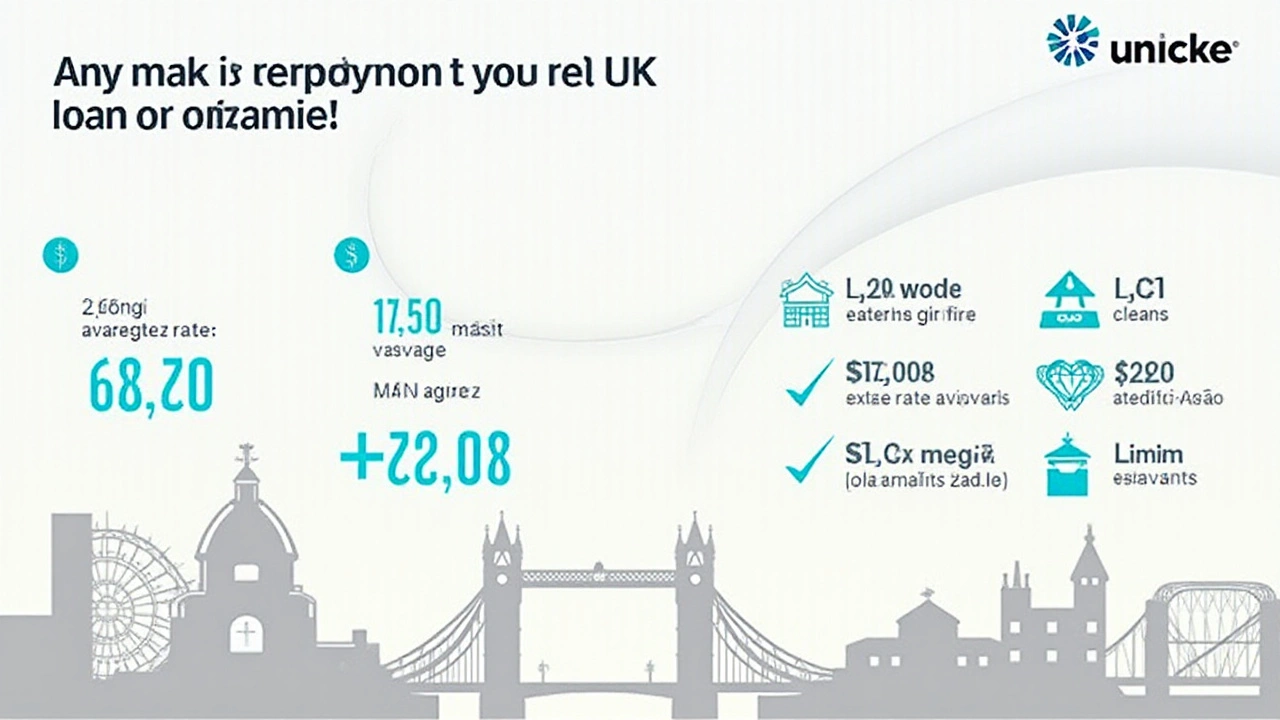Securing a personal loan doesn't have to be a daunting task. As banks continually adapt to changing customer needs and technological advancements, some stand out by simplifying the borrowing process.
While credit scores and financial histories still play significant roles, certain banks are redefining the landscape by offering straightforward application processes and flexible terms.
This guidance walks you through understanding what makes a bank more approachable for loans, the banks that consistently earn high marks from customers, and tips that might just tip the scales in your favor when applying.
- Understanding Loan Approval Factors
- Top Banks with Simple Loan Applications
- Tips for Quick Approval
- Future Trends in Personal Loans
Understanding Loan Approval Factors
When venturing into the realm of personal loans, understanding the myriad factors that influence loan approval can be enlightening. Banks scrutinize several aspects of your financial life before greenlighting your loan application. The credit score stands as the initial and oftentimes most critical factor. Serving as a financial fingerprint, it tells lenders how reliably you repay borrowed money. Most institutions wield it as a barometer of trustworthiness, and while some banks might be more lenient, dips below the mid-600s can pose challenges. However, credit is only one piece of the puzzle in obtaining a loan, and other factors are emerging to play significant roles.
Banks will also delve into your income stream to gauge your capacity for repayment. It's not just about how much you earn, but the stability of your employment and the ratio of your debts to your income. A consistent income assures lenders that you will meet the payment schedule diligently. Moreover, lenders often explore your debt history, calculating your debt-to-income (DTI) ratio. A favorable DTI illustrates your ability to manage monthly debts with the income you generate. According to financial expert, Jane Thompson,
A smart borrowing strategy includes keeping your DTI below 36% to improve your loan approval odds.This insight proves pivotal as aspiring borrowers plan their steps ahead.
Interestingly, not all banks hold identical philosophies when weighing these factors. Some might cast a wider net and consider alternative data, such as your payment history on utilities and rent, offering hope to those building or rebuilding their credit profiles. In recent years, there has been a noticeable shift towards embracing financial technology advancements that allow banks to analyze broader sets of data in a bid to attract a wider range of clientele. Despite these alternatives, the traditional credit mechanisms remain influential across most institutions. It's a balancing act that underscores the importance of thorough research in identifying a bank that aligns with your unique financial situation.
Amidst these factors, understanding each bank's distinct application process — from submitting tax returns to discussing collateral — can smoothen your journey. Every detail could sway the outcome. It doesn't stop there, as macroeconomic factors, such as interest rates set by central regulators, ripple through the system influencing lending policies. In 2025, we still see banks adjusting their lending criteria based on market conditions, ensuring they remain competitive while managing risk. Borrowers who recognize these interconnected elements often find themselves better prepared, leading to a more successful engagement with lenders.

Top Banks with Simple Loan Applications
When it comes to personal loans, some banks have gained reputations for streamlining the application process, making it easier for applicants to secure the funds they need. In 2025, these financial institutions stand out in terms of customer service, flexibility, and accessibility. Among the top contenders are traditional banks and digital-first innovators that have leveraged technology to enhance customer experience. Banks like Marcus by Goldman Sachs, Discover, and LightStream have simplified their procedures, often requiring minimal documentation and providing quick responses. This sets them apart as they eliminate the traditional barriers that borrowers often face, such as prolonged waiting periods and excessive paper trails.
Marcus by Goldman Sachs, for instance, offers personal loans that are notable for their no-fees approach, providing a clearer picture of borrowing costs from the get-go. Discover's personal loans come with a known reputation for transparency, offering fixed rates and terms along with customer-friendly service. These banks have also embraced the shift towards online applications, allowing potential borrowers to manage the entire process from the comfort of their homes. Digital interfaces are designed to be user-friendly, with intuitive navigation and responsive designs that adapt to any device. Most importantly, they have redefined the norms of credit assessment, often looking beyond the traditional credit scores to offer loans to a broader audience.
As per a study, consumer satisfaction is markedly higher when interacting with banks that provide an unobstructed digital experience. This sentiment is echoed by Susan Blair, a financial analyst, "The modern borrower values speed, clarity, and convenience, often prioritizing banks that can deliver just that."
"Navigating the world of personal loans shouldn’t feel like a labyrinth, and these banks have epitomized that shift,” she adds.Additionally, LightStream goes a step further by offering a "Rate Beat Program". If a borrower is approved for a lower rate with another lender, LightStream pledges to beat that rate by a set margin. Such features not only enhance the borrower's confidence but also instill a sense of competition among these banks to offer the best deal possible.
Let's delve deeper into some stats. A recent survey highlights that nearly 70% of consumers prefer digital applications over in-person banking when it comes to securing a personal loan. This trend underscores a significant shift in user preferences, pointing banks towards investing in digital infrastructures. Another surprising statistic reveals that loan approval rates have climbed by 12% since 2023 for applicants using digital platforms, reinforcing the notion that technology plays a crucial role in simplifying banking procedures. Banks that can harness the power of technology and maintain human touch points are more likely to succeed in an increasingly digital world.

Tips for Quick Approval
Getting a personal loan approved quickly involves more than just completing the application. It's a dance of preparation and presentation that begins long before you even fill out the first form. One of the most vital steps is to understand your credit report. Knowing your score not only helps you anticipate possible responses but also guides you to the banks most likely to offer your desired loan. Many lenders use credit scores as a primary factor, and a higher score can open the door to better terms and quicker approvals. A report from Experian in recent years noted that individuals with scores above 750 tend to receive loan decisions within days.
"Understanding your credit is like holding a map to your financial freedom," says Emily Thompson, a financial advisor with over two decades in the industry.
Alongside your credit score, maintaining a healthy debt-to-income ratio is crucial. Ideally, this should be under 36%, as it signals to lenders that you have the means to pay back the loan. Calculating this percentage is straightforward: divide your total monthly debt by your total monthly gross income, then multiply by 100. Staying within this threshold significantly boosts your chances of speedy approval because it highlights financial responsibility. When engaging with your bank, preparation is your friend. Gather necessary documents such as recent pay stubs, tax returns, and financial statements before meeting with lenders. This shows you're ready and serious, which can smooth the path to approval.
In today's digital age, many banks offer pre-qualification options that won't affect your credit score. This tool allows you to gauge your eligibility and potential terms without any commitment. It’s an excellent way to shop around and understand your options without the risk of a hard inquiry. Keep in mind that simplicity and clarity often trump complexity. Write a concise reason for your loan, explaining how you plan to use it and how repayment fits into your budget. This transparency can make a lender's decision easier and faster.
Loan approval times have improved thanks to technology, but not all banks are equal. Peer-to-peer lending and fintech companies are celebrated for swift online processes, often delivering funds within 24 hours. Yet, traditional banks offer advantages like face-to-face interactions and comprehensive financial advice that may make the process smoother and more personalized. Comparing these options by asking detailed questions can reveal which lender matches your urgency and needs. Remember that being informed and organized are key strategies for accelerating approval processes.

Future Trends in Personal Loans
As we move further into 2025, the landscape of personal loans continues to evolve dramatically. Technological advancements have paved the way for a new era in banking, with many traditional banks and newer fintech companies setting the pace. One of the most notable trends is the use of artificial intelligence (AI) in the loan approval process. AI is capable of analyzing vast amounts of data at lightning speed, making it easier to assess an individual's loan eligibility without the need for extensive paperwork. This not only speeds up the process but also reduces the biases that might occur with human loan officers.
Consumers today demand seamless, user-friendly interfaces as they navigate their borrowing options. In response, banks have started implementing more sophisticated digital platforms. These platforms often feature intuitive design and provide potential borrowers with immediate access to various loan options. With just a few taps on their smartphones or clicks on their computers, users can apply for loans and receive decisions within minutes, making personal loans more accessible than ever before.
Interest rates, another critical aspect of personal loans, are witnessing dynamic changes. Some banks are experimenting with personalized rates based on individual financial behavior rather than relying solely on credit scores. This means a more holistic understanding of an individual's financial health is becoming increasingly important. Banks now look at the broader picture—such as spending habits, savings patterns, and even social media behavior—to determine eligibility and rates, a trend likely to gain more traction in the coming years.
The push towards sustainability and eco-friendliness is not being ignored by the financial sector. As more people become conscious of their environmental impact, trends show that banks are starting to offer "green loans." These loans incentivise borrowers to make environmentally friendly purchases, such as solar panels or electric vehicles, by offering lower interest rates. Some leading financial institutions are even creating entire programs focused on sustainability, striving to attract an environmentally conscious clientele.
To foster greater financial inclusion, several banks are launching initiatives for those who have traditionally been excluded from the lending system, such as gig economy workers or those with limited credit history. These initiatives often involve mobile banking technologies, offering alternatives to those without regular financial histories. With the gig economy growing rapidly, these efforts could drastically reshape the personal loan market, allowing more people to obtain loans and empowering them to pursue their financial goals.
According to a recent report by McKinsey, "The integration of advanced digital technologies in banking not only opens up new opportunities for customer engagement but also helps optimize operational efficiencies, leading to competitive advantages."
There are also ongoing discussions about integrating blockchain into everyday banking processes. Through blockchain, transaction validation becomes transparent and tamper-proof, ensuring a level of security previously unimaginable. While still in experimental stages at some banks, the potential benefits of blockchain in making personal loans safer and more efficient cannot be overlooked.
83% of financial executives predict that blockchain can bring significant benefits by reducing loan processing times by up to 40%.
In summary, the future of personal loans in 2025 and beyond is bright and filled with innovations aimed at making borrowing faster, more inclusive, and more aligned with customer needs. These trends are set to empower consumers, providing them with an array of options tailored to their individual situations and preferences.
